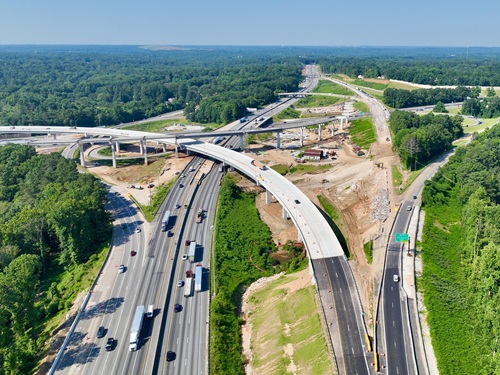Early projections from the National Highway Traffic Safety Administration indicate that motor vehicle traffic fatalities declined by 3.6 percent in 2023 versus 2022.
[Above photo by WSDOT]
The agency said it estimates 40,990 people died in motor vehicle traffic crashes in 2023, compared to the 42,514 fatalities that occurred in 2022.
NHTSA added in a statement that the fourth quarter of 2023 represents the seventh consecutive quarterly decline in fatalities; a decline that began in the second quarter of 2022.

The agency also estimated that the fatality rate for 2023 decreased to 1.26 deaths per 100 million vehicle miles traveled or VMT; down from 1.33 per 100 million VMT in 2022. Estimates also show that VMT increased by 2.1 percent or 67.5 billion miles in 2023 over 2022.
Concurrently, NHTSA has kicked off a new public outreach effort to raise awareness of the dangers of distracted driving. The newly rebranded “Put the Phone Away or Pay” campaign seeks to remind motorists of the dangers and the legal consequences – including fines – of distracted driving.
NHTSA launched this new safety campaign simultaneously with the release of new distraction data, which indicates 3,308 people were killed and an estimated additional 289,310 people were injured in 2022 due to crashes involving distracted drivers.
The agency noted that its “Put the Phone Away or Pay” campaign – which runs from April 4 through April 8 – is supported by a $5 million national media buy in English and Spanish on television, radio, and digital platforms.
State departments of transportation across the country are involved in a variety of efforts to improve road safety for all users, as well as help reduce traffic fatalities and injuries.

For example, in 2017, the Missouri Department of Transportation launched the “Buckle Up Phone Down” safety campaign – an outreach effort many other state DOTs across the country have adopted and implemented.
More recently, the Georgia Department of Transportation and “We Are Teachers,” a national educational media organization, recently launched a comprehensive “Car and Road Safety Program” for school students from kindergarten through 12th grade.
The two organizations said this free program aims to educate Georgia’s youth about the importance of road safety, whether they are passengers in a car, riding a bike, or walking.
Meanwhile, the Connecticut Department of Transportation released guidance in January for municipalities statewide that elect to use automated traffic enforcement safety devices, such as red light and speed safety cameras, in their communities.

More broadly, six state DOTs took home National Roadway Safety Awards in 2023 for infrastructure projects aimed at reducing highway injuries and fatalities, with two other state DOTs receiving honorable mentions for their efforts.
The biennial National Roadway Safety Awards program – presented by the Federal Highway Administration and the Roadway Safety Foundation (RSF) since 1999 – honors initiatives that improve roadway safety at the state and local level.
At the national level, the American Association of State Highway and Transportation Officials participated in a February event hosted by the U.S. Department of Transportation in Washington, D.C., to highlight progress made over the last two years on the agency’s National Roadway Safety Strategy or NRSS.
The NRSS – launched by USDOT in January 2022 – represents a series of “concrete steps” for the agency to address the “alarming rise” in U.S. roadway fatalities via “systemic changes” to prevent tragic and avoidable deaths and serious injuries on the nation’s highways, roads, and streets.

“This is not just a national safety issue – it is a national health crisis and we all share a role in driving down roadway fatalities,” noted Jim Tymon, AASHTO’s executive director, at the event.
“We need to do everything in our power to reduce number of fatalities to zero,” he said.
To that end, he noted that AASHTO hosted a national Safety Summit in 2023 in Kansas City, MO, to bring together state DOTs, federal agencies, local governments, and safety advocates to map out ways to improve roadway safety – with another such summit being planned for the fall of 2024.
“These summits are helping us come up with new safety strategies for roads and bridges – to take the different perspectives of all roadway users into account so we do not design roads and bridges in the same way we always have to ensure safety is integrated into everything we do,” Tymon said.
 Top Stories
Top Stories
How Rising Construction Costs Could Impact Reauthorization
November 14, 2025 Top Stories
Top Stories

